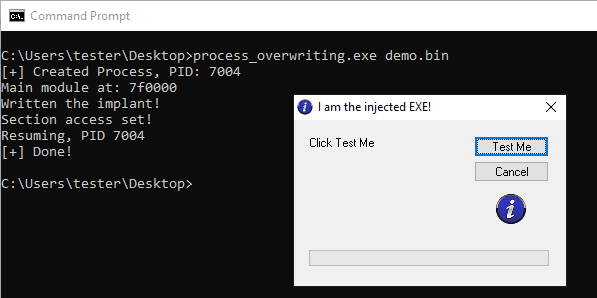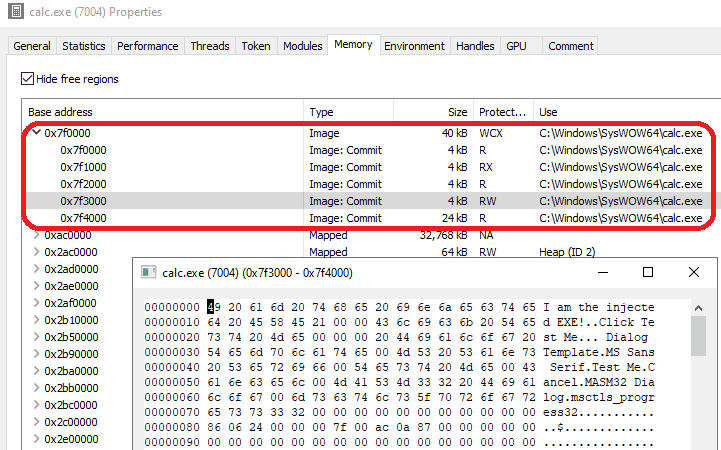
Process Overwriting
Process Overwriting is a PE injection technique, closely related to Process Hollowing and Module Overloading


Process Hollowing (aka RunPE) is an old and popular PE injection technique. It comes in has a variety of flavors, but there are some steps in common:
- Start by creating a process in a suspended state
- Write our own PE module in its memory
- Redirect to the new module
- Resume the thread
Process Hollowing does not require manual loading of payload imports. Thanks to step 3 Windows loader treats our PE implant as the main module of the process and will load imports automatically when its execution resumes.
To make our implant recognized by Windows loader, its Module Base must be set in the PEB. It is usually done by one of the two ways:
- in the most classic variant, the original PE is unmapped from memory, and the new PE is mapped on its place, at the same address.
- in another, yet common variant, the old module is left as is, and another PE is mapped in a new memory region. Then the new module’s base address is manually written into the PEB (this variant was demonstrated here)
As a result of those classic implementations, we get a payload running as the main module, yet it is mapped as MEM_PRIVATE (not as MEM_IMAGE like typically loaded PEs). To obtain payload mapped as MEM_IMAGE we can use some closely related techniques, such as Transacted Hollowing or its variant “Ghostly Hollowing”.
Process Overwriting is yet another take on solving this problem.
In contrast to the classic Process Hollowing, we are not unmapping the original PE, but writing over it. No new memory is allocated: we are using the memory that was originally allocated for the main module of the process.
Pros:
- the implanted PE looks like if it was loaded by Windows loader:
- mapped as
MEM_IMAGE - divided into sections with specific access rights
- the image is named
- mapped as
- the convenience of loading:
- no need to manually relocate the implant prior to injection: Windows loader will take care of this (in classic Process Hollowing we have to relocate the module)
- no need to fill imports (like in every variant of Process Hollowing)
- no need to allocate new memory in the process
Cons:
- It doesn’t work if the target has GFG (Control Flow Guard) enabled (yet it is possible to disable it on process creation)
- The target’s ImageSize must not be smaller than the payload’s ImageSize (remember we are using only the memory that was already allocated!) – this limitation does not occur in other flavors of Process Hollowing
- Can be detected by comparing the module in memory with a corresponding file (PE-sieve detects it) – just like every variant of Process Hollowing